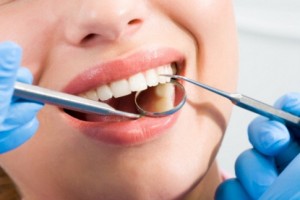

Human Papillomavirus [HPV] is one of the most common virus groups in the world. There are many different types of HPV, and the health risk varies depending upon the type of virus. While some types of HPV are low-risk and may cause skin lesions such as warts, there are other HPV types that are classified as high-risk. These high-risk HPV types may cause an HPV infection that may lead to cancer. For example, medical research shows that certain high-risk types of HPV are linked to approximately 90% of cervical cancers. Similarly, recent studies show that these same high-risk types cause cancers of the mouth, tongue, tonsils, and throat areas. Along with excessive smoking and alcohol consumption, specific types of oral HPV are now considered to be a separate and serious risk factor for developing cancer in the head and neck regions.
How do people get HPV?
HPV transmission of the most common types can be quite simple. With just close contact between people, the infection can be spread. These types of HPV are considered to be low-risk. However, the more serious types of HPV [high-risk group] that may lead to cervical cancer or oral cancer are known to be sexually transmitted. Other avenues of transmission may also occur. Studies are ongoing to further understand how, in addition to sexual transmission, these viruses are transmitted. Both males and females are at risk when intimate contact is made with HPV-infected individuals. Individuals at greatest risk are those that are in intimate relationships with HPV-infected partners.
How common are HPV-related diseases?
According to the Centers for Disease Control, approximately 20 million Americans are currently infected with HPV. Another 6 million people become newly infected each year.* There are many different types of HPV and they are ranked based on their ability to cause certain clinical changes. HPV infections are becoming a source of growing concern.
What are the signs and symptoms of Oral HPV infections?
Clinical signs of oral HPV infections vary depending on the type of HPV that is present in the infection. Low-risk oral HPV types lead to a wart, or “papilloma.” High-risk oral HPV may present as a sore that won’t heal, which is a worrisome sign of potential cancer.
How do I know if I have an Oral HPV infection?
Early oral HPV infections do not typically cause any clinical signs or symptoms; thus, a visual exam would not detect people that may already have an infection caused by oral HPV. Today, however. a simple test called OraRisk® HPV is available from your oral health professional that can detect oral HPV infections very early.
The OraRisk® HPV Test
Your oral health professional can perform this easy test as a part of your routine oral health exam. The OraRisk® HPV test uses a sterile saline rinse to determine if an oral HPV infection is present.
Here’s how the test is done:
Your oral health professional will ask you to “swish and gargle” with a sterile saline solution for 30 seconds. You will then empty the saline from your mouth into a small, coded container that will be sent to OralDNA® Labs for processing. Your oral health professional will receive your test results and contact you to discuss them.
Who should be tested for Oral HPV?
- Individuals with “traditional”‘ risk factors for oral cancer such as smoking and alcohol
- Males and females that are sexually active
- Individuals with a family history of oral cancer
- According to the Oral Cancer Foundation, “Very recent data (late 2007-2008) lead us to believe that the fastest-growing segment of the oral cancer population is non-smokers under the age of 50.”** However, all risk factors should be considered regardless of age group.
Why is it important for me to take the OraRisk® HPV test?
When oral HPV causes an infection, there are generally three possible outcomes:
- It may “clear” without causing cell changes (usually occurs within the first 12 months)
- It may linger for long periods of time without any clinical signs or changes
- It may progress and alter cells, leading to malignant changes and cancer of the mouth, tongue, tonsils, or throat
Remember: Early detection and identification of the presence or absence of high-risk oral HPV types is good medicine. While it may be safe to say that most oral HPV infections do not cause cancer, oral HPV infections, especially those that are high-risk types, are cause for concern and should be monitored closely. Any change in color or texture of the tongue, mouth, or throat, or sores that do not heal, should be discussed with your doctor or dental professional. Additional tests may be required to determine if an oral lesion is in fact cancer.
If I test positive for Oral HPV, does it mean I have cancer?
No. A positive OraRisk® HPV test does not necessarily mean that cancer is present, nor does it mean that you will definitely develop cancer. The earlier the risk for oral cancer is detected or the earlier oral cancer itself is detected, the more likely it can be treated successfully. Oral HPV is now a known cause for cancers of the mouth and throat areas; it is important for you and your dental professional to know if an oral HPV infection is present and, if so, which type of oral HPV infection is present. The OraRisk® HPV test helps you and your dental professional better understand your risk for oral HPV-related oral cancer.
Are you at risk?
Get tested and be certain.
For more information, please visit
www.portofinodental.org.
239-482-8806
6805 Porto Fino Circle
Fort Myers, Florida 33912
*Centers for Disease Control and Prevention: Genital HPV Infection-CDC
Fact Sheet. www.cdc.gov/STD/HPV/STDFact-HPV.htm
**Oral Cancer Foundation: Oral Cancer Facts.
http://oralcancerfoundation.org/facts/index.htm
 Southwest Florida's Health and Wellness Magazine Health and Wellness Articles
Southwest Florida's Health and Wellness Magazine Health and Wellness Articles

